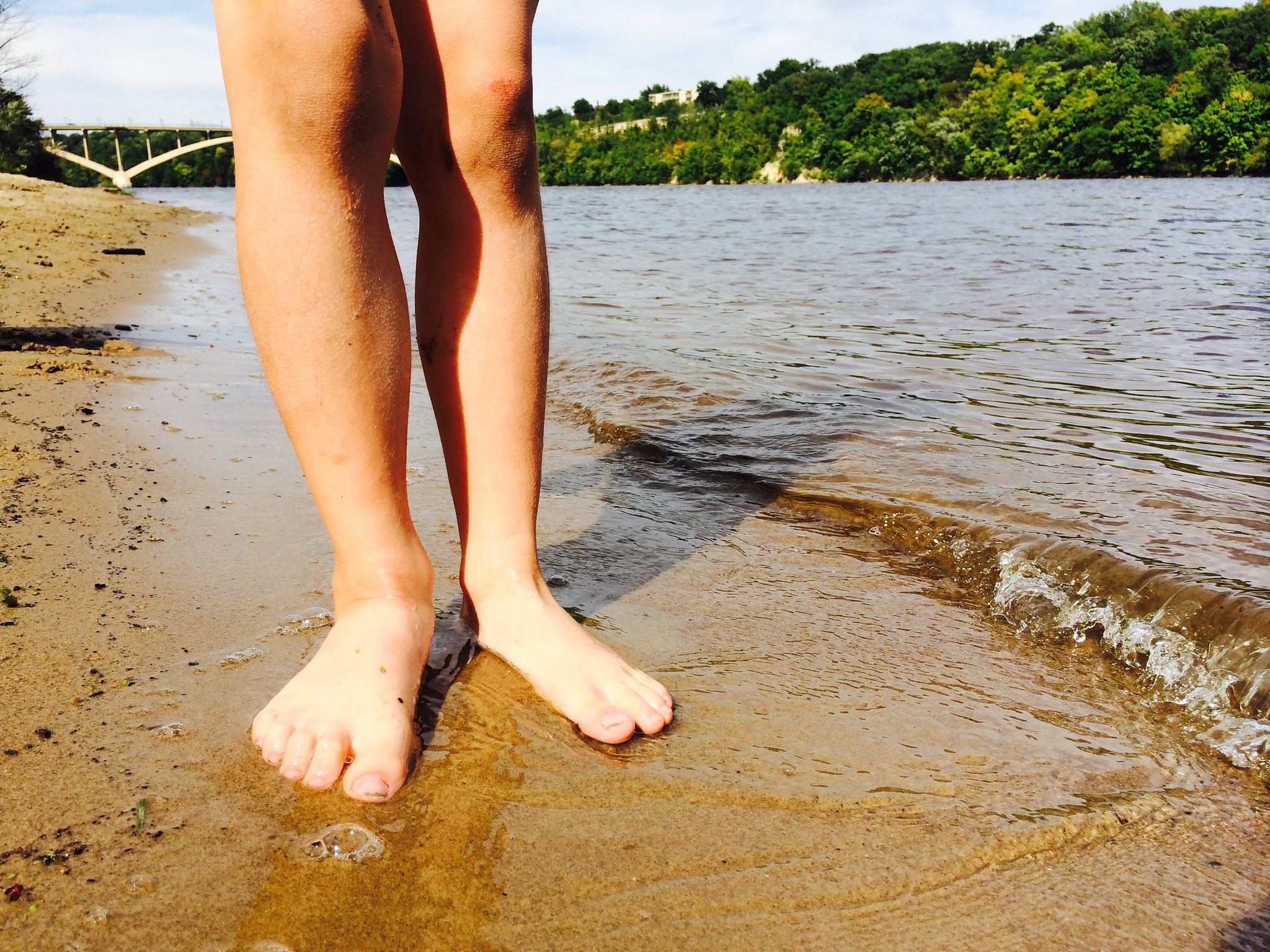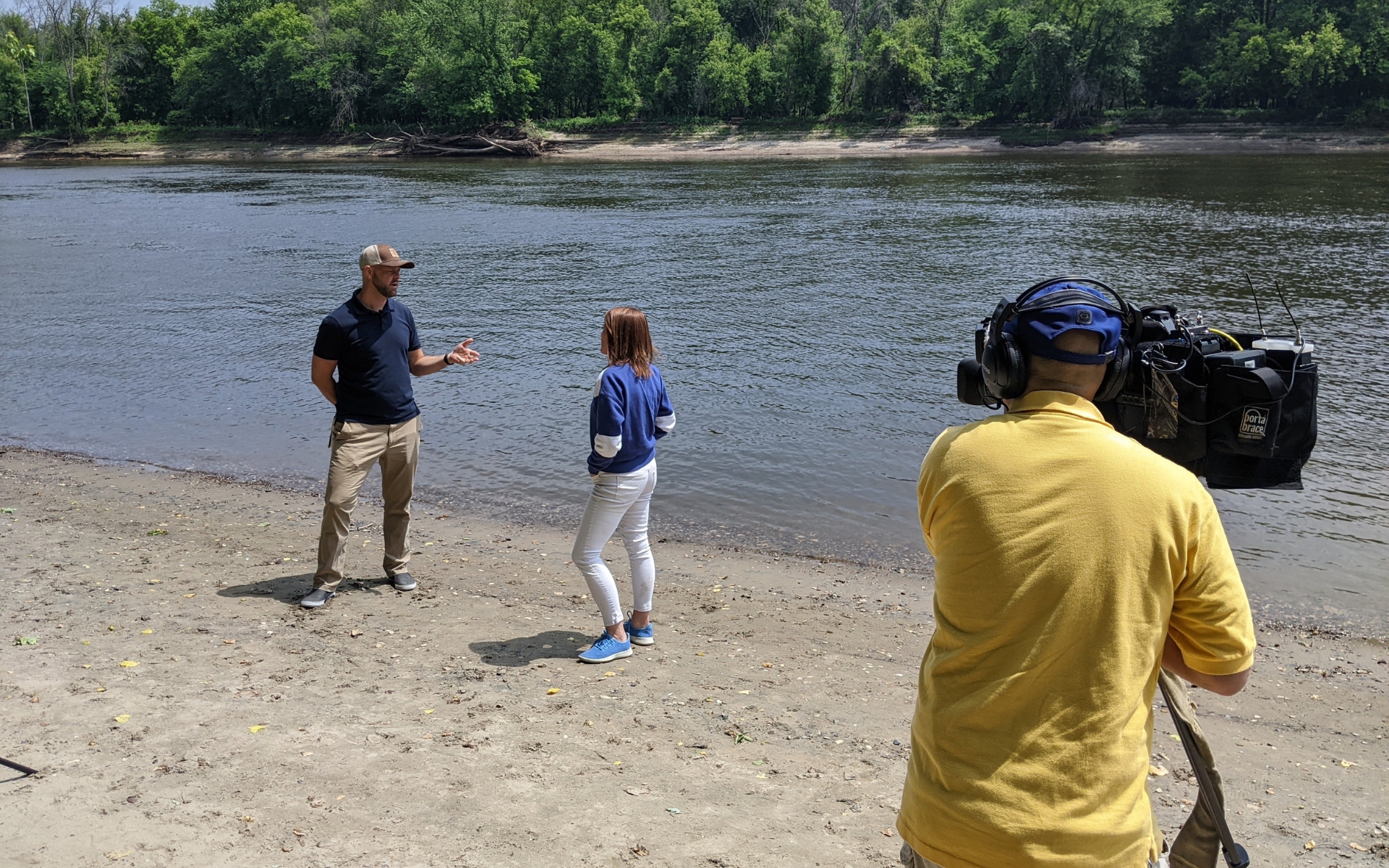Is it safe to swim in the Mississippi River in the Twin Cities?

As an organization focused on the river's health, we get asked this question all the time. (Photo by MPCA Photos)
It's maybe the quintessential summer question for Twin Cities residents looking to enjoy the outdoors: Is it safe to swim in the metro Mississippi River?
As an organization focused on the river's health, we get asked this all the time (including by reporters, who often come to FMR when covering this topic).
Our answer? It depends. And there are a few important things to know off the bat.
Pollution levels
In some ways, the Mississippi River is the least-sick and least-polluted it's been in decades, thanks in large part to the 1972 Clean Water Act.
Still, most of the Mississippi River from St. Cloud to Hastings is considered "impaired" by the Minnesota Pollution Control Agency. This means those stretches of the river fail to meet at least one water quality standard, which could negatively impact humans, wildlife or aquatic plants. Industry pollution, climate change and human behavior also continue to threaten the river's health.
"It's cleaner and healthier," FMR's Water Program Director Trevor Russell explained to WCCO, "but not clean and healthy."
So while things are better than they were 50 years ago, we're a long way from a truly clean, healthy Mississippi River.
Which brings us back to the main question: Is it safe enough to swim?
The river faces numerous water quality and aquatic life challenges. When it comes to swimming, there are two primary risks to consider before jumping into the river: water quality and river flow or physical conditions. Here's what you need to know.
Bacteria
When it comes to the metro Mississippi River, bacteria such as E. coli are the primary risk to human health from a pollution perspective. E. coli can make people and pets severely sick and is particularly dangerous for certain populations.
(While multiple types of bacteria can taint the river, water quality monitors often use E. coli as a stand-in for overall safety as it's a good indicator of overall bacteria levels.)
E. coli usually ends up in our waters from runoff. Rain washes pet or wildlife waste from yards, trails, sidewalks, farms and other surfaces into the river, either directly or through urban storm drain systems. (The Star Tribune explained the ins and outs of this in a story that features FMR.)
Because of this, E. coli levels in the Mississippi River can fluctuate. For instance, we recommend not swimming in the river within 48 hours of significant rain, since the subsequent runoff often causes bacteria levels in the water to spike.
The bacteria won't penetrate your skin if you go do decide to go for a dip, so you'll generally be OK.
Still, use caution!
- Try not to swallow the water
- Rinse off/shower immediately afterward
- If you have any open wounds, cover them up or postpone your swim session
River flows
There are physical dangers that come with swimming in the Mississippi River.
As Greta Kaul points out in this MinnPost piece that includes insights from FMR, rivers are strong and their speed varies significantly. It's also incredibly difficult to track currents. The river bottom itself changes, especially at curves or after a dam, which can result in sudden drop-offs.
You should always follow safety recommendations and guidelines from state agencies such as the Minnesota Department of Health and the Department of Natural Resources, including wearing a life jacket.
So … is it safe to swim?
The river's wild beauty draws us to it, but also comes with risks.
Yes, you can swim in the Twin Cities metro Mississippi River. However, you should use caution in impaired reaches, avoid swimming anywhere in the river up to 48 hours after a major rain event and be mindful that our big river is powerful and dynamic.
If you take precautions, follow guidelines and look into current conditions, then swimming in the metro Mississippi River may be a good experience.
But if you're at all uncertain about diving in, there are many more ways to enjoy the river in our midst!
Our explore the river page includes recommendations for where to paddle, hike, view beautiful waterfalls, take in scenic vistas and more, all right here in the Twin Cities.

FMR Water Program Director speaking to WCCO's Heather Brown at Crosby Farm Regional Park for a 2023 "Good Question" segment. (Photo by FMR)
What about nitrates?
We frequently highlight concerns over nitrate pollution in the Mississippi River, including its role in the annual Gulf of Mexico dead zone and the health risks posed by excess nitrates in drinking water.
Fortunately, nitrate pollution in the Mississippi River isn't an immediate danger for swimmers, who would have to ingest an unrealistically large amount of river water in a short amount of time for health concerns to become a reality.
There's no real threat to public health from excess nitrates while recreating.